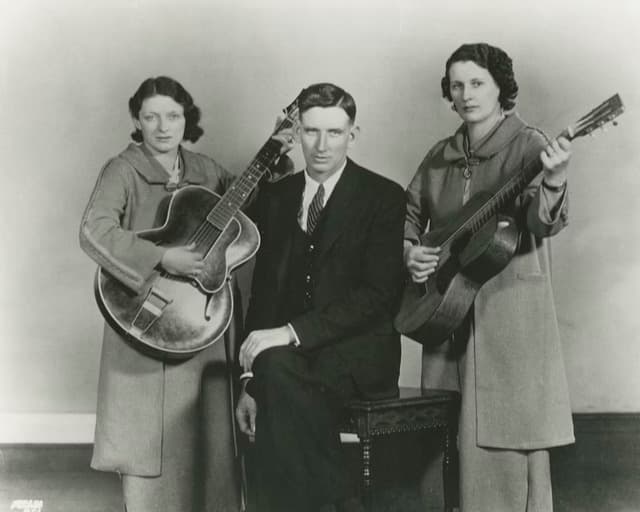
A timeless tale of love lost, blooming like a solitary flower in the wildwood.
To speak of The Carter Family is to speak of the very bedrock of American music. Their voices, their stories, and their instruments laid the foundation for what would become country, folk, and even rock and roll. Among their vast and hallowed catalog, few songs resonate with the quiet, profound melancholy of “Wildwood Flower.” First recorded by the legendary trio in 1928, the song is a cornerstone of their legacy and a testament to the enduring power of a simple, haunting melody. It wasn’t a hit in the modern sense—it didn’t climb the charts because the charts as we know them didn’t exist in the same way. Instead, it became a standard, a song passed from hand to hand, from family to family, becoming one of the most recognizable melodies in the entire folk tradition. Its success was measured in how many copies of the 78-rpm record sold, and more importantly, in the countless generations who learned to play it on their front porches and in their parlors.
The story of the song is as layered and mysterious as the Appalachia from which it sprung. It is an adaptation of a Victorian-era poem titled “I’ll Twine ‘Mid the Ringlets” by Maud Irving, first published in 1860, with the melody likely an even older traditional tune. But the version we know and cherish today—the one that feels so deeply woven into the fabric of American identity—is unequivocally the one crafted by A.P., Sara, and Maybelle Carter. They didn’t just sing the song; they gave it a soul, a rural authenticity that stripped away the sentimentality of the Victorian parlor and replaced it with the grit and ache of real life.
The true magic, however, lies in the hands of Maybelle Carter. This is the song that introduced the world to her revolutionary “Carter Scratch” or “thumb-brush” guitar style. While A.P. was the song-catcher and Sara the lead vocalist, it was Maybelle’s guitar that provided the very heartbeat of the music. With her thumb playing the melody on the bass strings and her fingers strumming the rhythm, she transformed the guitar from a simple rhythm instrument into a melodic voice in its own right. Listening to the original 1928 recording is like witnessing a quiet revolution—the plucking of the strings is not just accompaniment; it’s a character in the story, sighing with the same wistful sorrow as the lyrics.
And what a sorrowful story it is. On the surface, “Wildwood Flower” is a tragic tale of betrayal. The singer laments her heartbreak after her lover leaves her to marry another woman of higher social standing, a “brown-eyed boy” who has left her “to weep and to mourn alone.” Yet, the song is not a tearful outburst. It is a work of quiet resignation. The metaphors of flowers—the wildwood flower, the pale amaranthus—are not just pretty poetic flourishes. They are a reflection of the narrator’s own fate, a fragile, beautiful thing left to wilt alone in the harsh world, a testament to love’s fleeting and fragile nature.
For those of us who have lived long enough to feel the sting of a love that faded or a friendship that frayed, “Wildwood Flower” resonates on a visceral level. It speaks to a shared human experience of loss and loneliness, but it does so with a certain stoic beauty. It reminds us of a time when music wasn’t about manufactured hits but about shared stories and collective memories. It’s a song that feels as old and weathered as the mountains themselves, a timeless piece of art that continues to grow and flourish in the hearts of every generation that discovers its profound and simple grace.